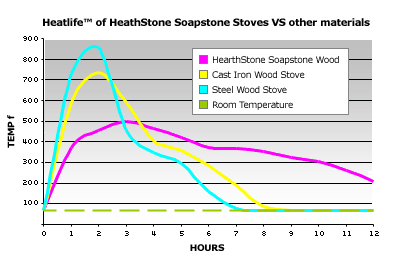curdy
ArboristSite Operative
Anyone out there place stone or brick on top of their stove to maintain heat? Taking an idea from the HearthStone and WoodStock stoves with their soapstone exteriors, I'm wondering if I can put something on top of mine to help maintain a little more consistent heat between the peaks of my fires.
I burn 24/7 so I'm not worried about it robbing heat from the stove (taking longer to heat up at first). Goal would be to help maintain a more consistent heat, and help keep the steel from expanding and contrasting too much if the time between loads goes a little longer than expected.
I use an insert, so scraps would be OK because it'll be behind the surround (doesn't have to look pretty).
I'll be fabricating a plate and insulating around the liner this weekend, so that will help as well.
I have some left over concrete paver bricks as well as some common red clay bricks that I could use if you guys think that will work and wouldn't damage either the stove of the pavers (want to keep those in good shape, they were kind pricey)
Does this make sense at all? Anyone do this already?
I burn 24/7 so I'm not worried about it robbing heat from the stove (taking longer to heat up at first). Goal would be to help maintain a more consistent heat, and help keep the steel from expanding and contrasting too much if the time between loads goes a little longer than expected.
I use an insert, so scraps would be OK because it'll be behind the surround (doesn't have to look pretty).
I'll be fabricating a plate and insulating around the liner this weekend, so that will help as well.
I have some left over concrete paver bricks as well as some common red clay bricks that I could use if you guys think that will work and wouldn't damage either the stove of the pavers (want to keep those in good shape, they were kind pricey)
Does this make sense at all? Anyone do this already?
Last edited:





